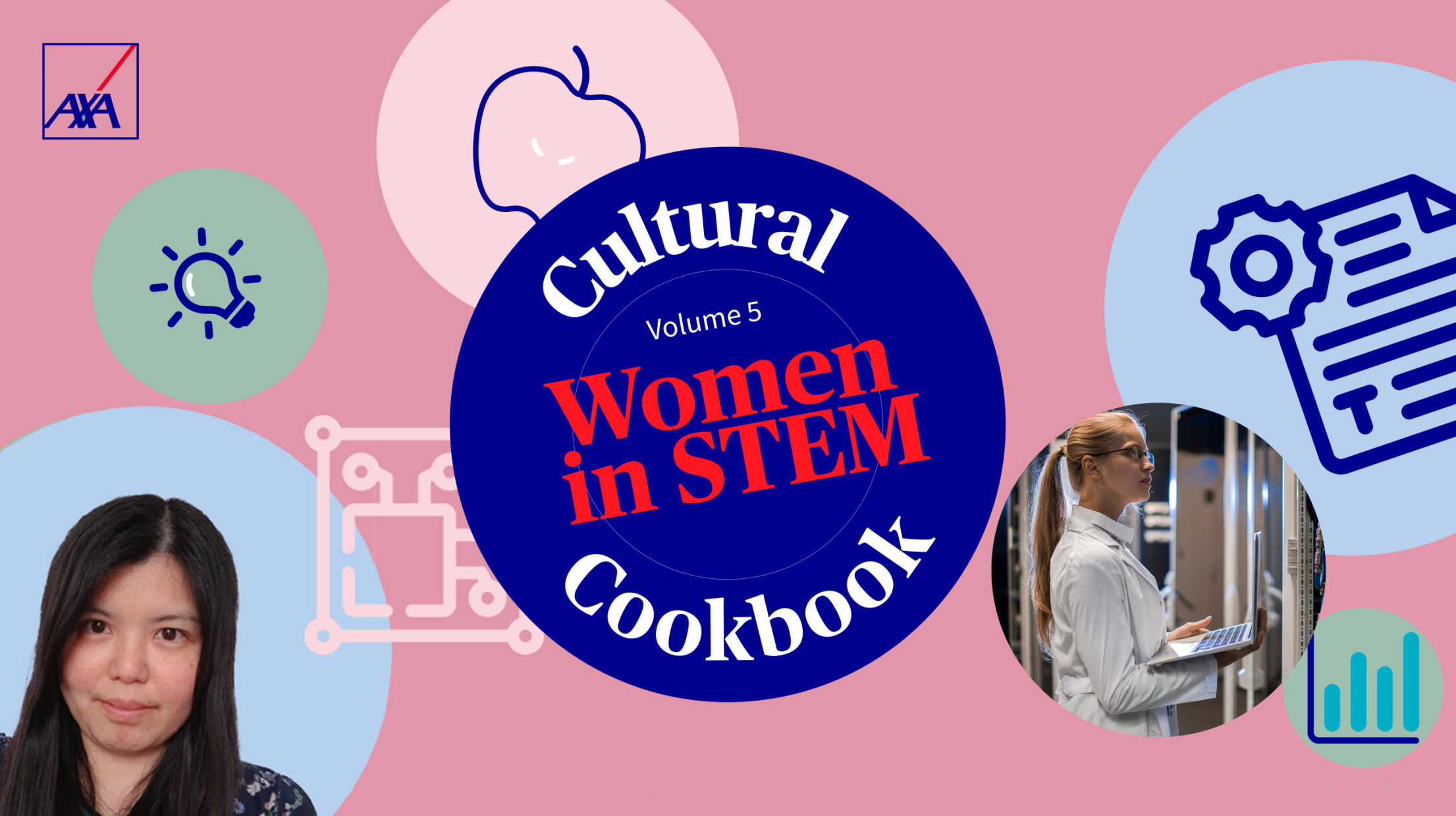Cultural Cookbook Volume 5 - Women in STEM

In this edition of Cultural Cookbook, Sindy shares her experience working in Data Science and talks about how we can create a more inclusive culture in STEM (science, technology, engineering and maths).
Hello, I’m Sindy Yick, the Data Science Manager for AXA Retail. When I started as an analyst, there was no such thing as Data Science — it has evolved so much, especially over the last 5 years, and the opportunities to develop a career in this space are endless. So here’s my recipe for a successful and inclusive career in STEM.
Ingredients
-
Great role models — find people who inspire you
-
Curiosity — make time to keep learning
-
Supportiveness — encourage other people in the field, especially women
-
The right company — find a company whose values match yours
-
Confidence — trust in your abilities and expertise
Method
Step 1: Find role models
For me, my teachers and other STEM professionals played an important role in inspiring me into the field. I was lucky to have a Maths teacher who explained things really well and went through calculations step by step — everything makes so much more sense when you understand the logic. After my A-Levels, I attended some career talks where we were encouraged to take STEM subjects at university because it’s a skill that can take you anywhere. Having this encouragement is why I continued my career in STEM.
Step 2: Encourage women in STEM
I’d like to see a more diverse and gender-balanced workforce in the future and everyone should be encouraged to embrace the various challenges in the technology world. Girls should be encouraged to code, play with construction toys and do maths puzzles when they’re young, like a lot of boys are. I believe if girls were encouraged to do these activities, they would find STEM more accessible in later years and it would eventually increase the number of women working in the field. Men also play an important role in this – if there are more men encouraging women, it would make women more comfortable to work and stay in STEM.
Step 3: Keep learning
I’m amazed (and a little scared!) by how quickly Data Science has evolved over the past five years. So even though I’m a manager, it’s really important that I keep my technical skills up to date. I spend lots of time in meetings and talking to stakeholders, so it’s hard to get my hands dirty. I set aside 1-2 working hours a week to code, and I attend meetups and conferences to keep myself up to date. In AXA Data Science, we’re constantly exchanging ideas and technical knowledge with talks from external and internal speakers.
Step 4: Work with a company that supports you
In general, there are less women in STEM, not to mention I’m from a BAME background so one of the things that attracted me to AXA was the diverse culture. I was also attracted by the flexible working that was on offer. As a working mother of 2, it was important to have a job that allows me to look after my family and continue with my career at the same time.
Step 5: Be confident in your abilities
If you’re thinking about a career in STEM, go for it! There are so many ways to learn STEM ranging from formal education to online learning. There are also mentoring and networking opportunities that support women in STEM and I’d encourage people not to miss these opportunities. For all the women who are already working in STEM, make sure you remind yourself that you’re just as good as anyone else and be confident in what you do.
Bon appétit!
- CATEGORIES:
- Retail
- Thrive in a diverse community
- Digital & Data





